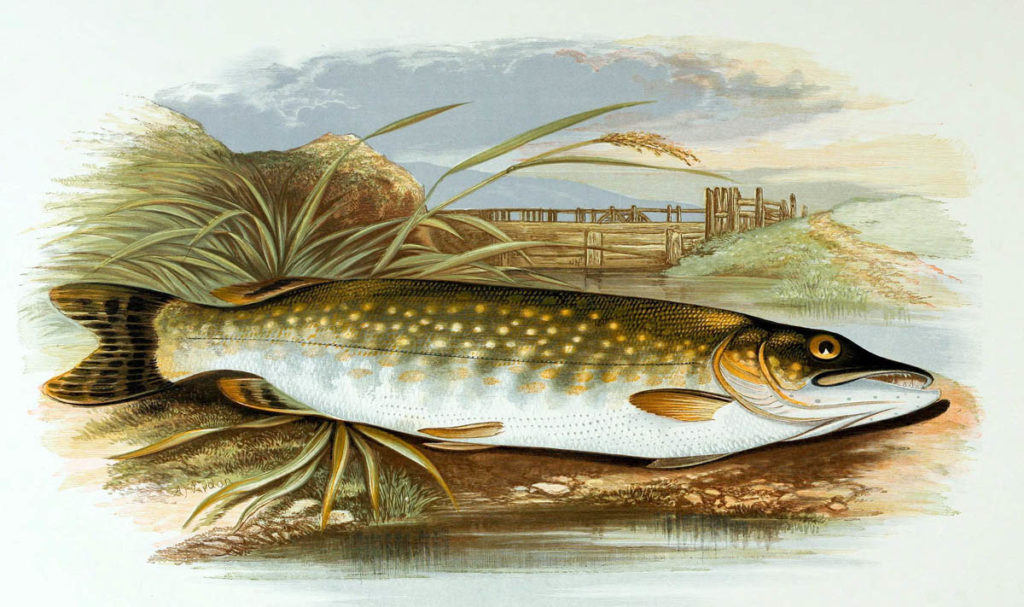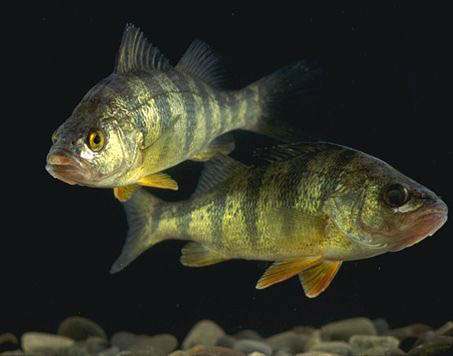The northern pike is a carnivorous fish species. They are typical of Northern Hemisphere brackish and fresh waters. In the United Kingdom, Ireland, and most of Eastern Europe, as well as Canada and the United States, they are simply known as pike.
Pike can grow to be quite large, with average lengths of 40-55 cm (16-22 in) and maximum recorded lengths of up to 150 cm (59 in) and published weights of 28.4 kg (63 lb). Northern pike reach larger sizes in Eurasia than in North America, and they typically reach larger sizes in coastal rather than inland Eurasia.
Pike can be very tasty to eat, but contains a lot of small bones. To remove all of the bones, a good fillet is required.

The yellow perch, also known as perch, striped perch, American perch, American river perch, or preacher, is a perciform (perch-like) freshwater fish native to much of North America. Yellow perch populations have shown latitudinal variation in age, growth rates, and size, which is most likely due to differences in day length and annual water temperatures. Yellow perch typically live 9 to 10 years in many populations, with adults ranging in size from 4 to 10 in (10 to 25 cm).
Yellow perch are only found in North America, in the Arctic and Atlantic Ocean tributaries, as well as the Great Lakes-St. Lawrence River and Mississippi River basins. Its native range in Canada extends from Nova Scotia to Quebec and north to the Mackenzie River. It is also common in the northwest, from Great Slave Lake to Alberta. It is not found in any other part of Canada.

Yellow perch is a popular fish on restaurant menus.
Dive Report
“Dive report for the Pike/Perch video from Twin Lakes, Alberta. Dive time 60 minutes, maximum Depth 40 feet, average depth 6 feet. Water temp was 17C (62 F) in the shallows, surface to about 12 feet, 4C (39F) at 30 feet. Most of the dive was cruising the shallows at about 5 or 6 feet following the north and eastern shore’s looking for schools of perch and skulking pike. The shallows were so warm I had to drop below the thermoclines to cool off.”
John McCuaig
Thanks to John McCuaig for his video submission.
Follow John’s Diving Adventures on Facebook.






